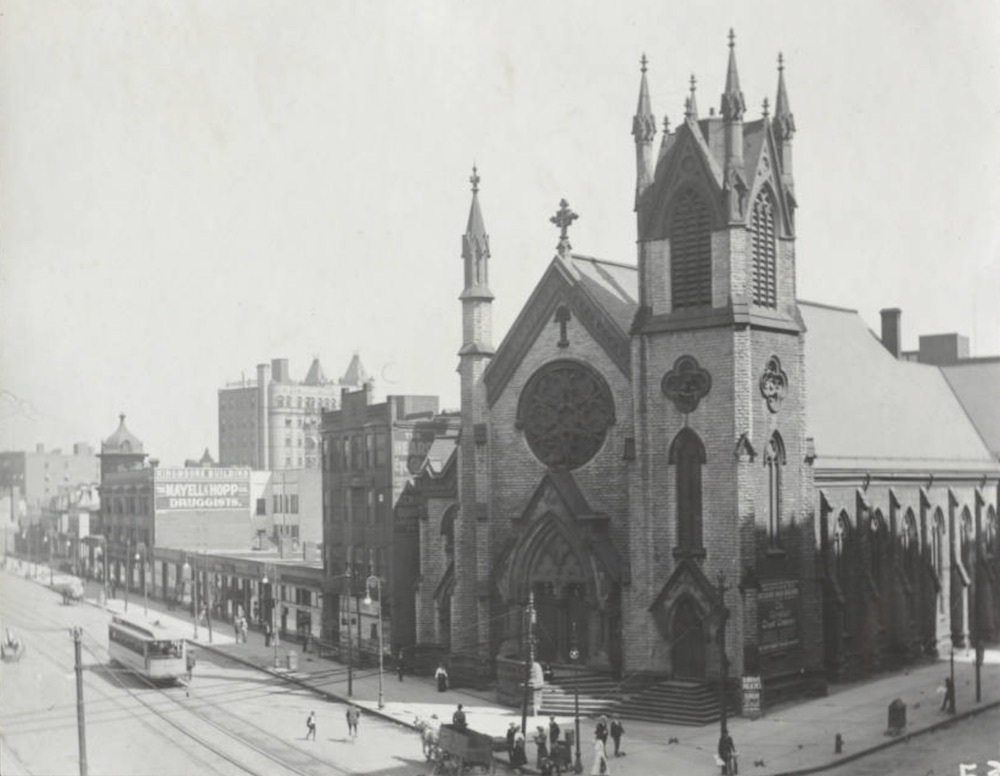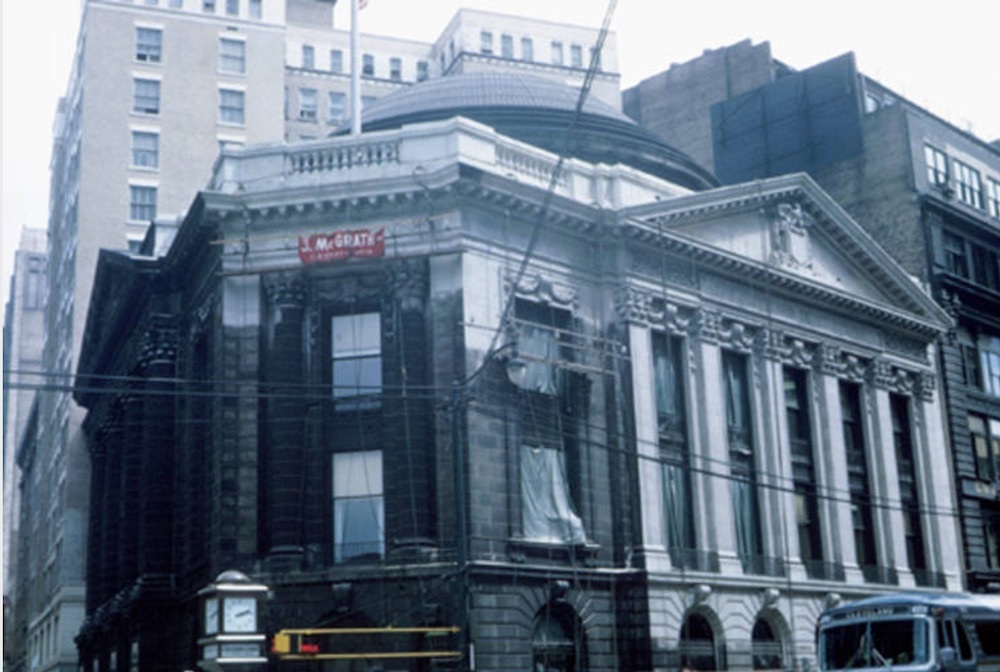
The southeast anchor of Cleveland’s most prominent downtown intersection is a work of art that began, in the true spirit of capitalism, with a competition. In 1903, the Cleveland Trust Company (established in 1894 with $500,000 in capital) merged with the Western Reserve Trust Company. The combined entity could not function effectively in rented office spaces, so it launched a contest to decide who would design a new headquarters. The winner was George Browne Post, a renowned architect who had previously designed the home of the New York Stock Exchange. Post may have been the 19th century’s king of “architectural firsts.” The Equitable Life Assurance Society in New York, which he designed in 1868, was the first office building to use elevators. Post’s Western Union Telegraph Building (1872) was the first office building to reach ten stories. And upon its completion in 1890, Post’s 20-story New York World Building (also known as the Pulitzer Building) was the city’s tallest structure.
Post’s winning design became the Cleveland Trust Company headquarters. Completed in 1908, it remained a banking cornerstone for 88 years. In 1919 the bank unveiled a plan to add an 11-story tower atop Post's original building, but it took another half century before a major expansion occurred–this time in the form of an adjacent 29-story tower designed by Brutalist architect Marcel Breuer. The late 1960s plan actually called for twin towers framing the old rotunda, but the second tower was never built. By 1977, Cleveland Trust had 120 branches and $5 billion in assets. By 1987, the entity now known as AmeriTrust was the eighteenth largest bank in America. However, the collapse of the real estate market in the late 1980s hurt the institution badly and, in 1991, AmeriTrust accepted a buyout bid from Society Corporation (now Key Bank). The complex, including the adjacent tower, thus became superfluous and closed in 1996. It remained shuttered for almost two decades, emblematic of fading, neglected cities everywhere and a victim of poor management decisions by its overseers: the commissioners of Cuyahoga County.
Through all its changes, the building’s glorious exterior (three stories of white granite facing) and marble interior rotunda survived largely intact. According to The Guide to Cleveland Architecture, “The central pediment displays sculptures by Karl Bitter, which depict, allegorically, the primary sources of wealth in the United States (land and water) with their concomitant occupations: industrial labor, agriculture, mining, commerce, navigation and fishery. The interior of the rotunda features a dome, 85 feet high, with stained glass panels 61 feet in diameter. (In 2016, through the efforts of local graduate student Karl Brunjes, it was learned that these glass panels were not designed, as earlier believed, by Louis Comfort Tiffany, but instead by Italian immigrant Nicolas D'Ascenzo.) The fluted columns, Corinthian pilasters, bronze doorways and grilles, marble floors and walls are reminiscent of the Italian Renaissance.” High above the main floor are a series of 13 murals created by Francis Davis Millet, an American painter, sculptor and writer. Entitled “Pioneer and Discovery,” the panels chronicle America’s colonization, cultivation and development. Each panel measures 5 x 16 feet.
The building’s business accoutrements may not be works of art, but they are nonetheless impressive. The safe deposit vault was built of 200 tons of metal encased in eighteen inches of concrete. The vault’s door weighed seventeen tons. The facility also had a “telautograph,” which could copy a message in one part of the building at the same time the original message was being written.
The Cleveland Trust Company’s current incarnation began in 2013, when Geis Companies purchased the structure, along with the adjacent tower, which they converted into a hotel and apartments. Cleveland-based grocery store chain owners Tom and Jeff Heinen then invested $10 million to transform the bank rotunda, and an adjoining building at 1010 Euclid Avenue, into a 27,000-square-foot supermarket, which opened its doors on February 25, 2015. The first floor of the rotunda houses the deli, bakery, meat and seafood, and prepared foods departments, and includes a seating area where patrons can enjoy their food. The second floor houses beer and wine departments where patrons can try samples. Seats throughout this level provide excellent views of Millet’s masterpieces. The 1010 Euclid Avenue portion of the store contains produce and packaged and frozen foods.
The Heinen’s remake of the Cleveland Trust Company catalyzed a resumption of the importance of Euclid–East 9th intersection. However, rather than being the heart of the financial district with banks on three of four corners, the intersection now has three of its four corners directed toward lifestyles: in addition to Heinen’s transformation of Cleveland Trust into a flagship supermarket, a hotel occupies the old Scofield Building, and apartments are planned in the old Union Commerce Bank Building.
Images










